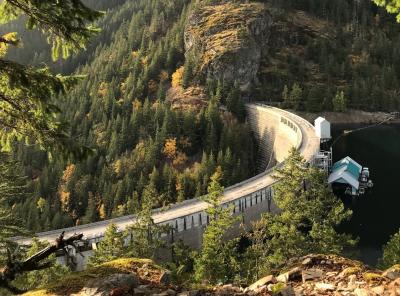Long-Term Basin-Scale Hydropower Expansion Under Alternative Scenarios
Hydropower is an important source of clean energy, but hydropower’s future expansion will depend on many factors. These factors include the location and amount of water available for hydropower, hydropower costs compared with other energy sources, and social factors like population and economic growth or energy system transitions. Studying future hydropower expansion is complex due to the diverse and interactive nature of these factors. Using a global multi-sector model, researchers projected future hydropower expansion for every major river basin in the world while considering the impact of several factors.
Only a few global multi-sector models currently exist. These models represent key processes in interlinked human and Earth systems and provide insights into future global environmental changes under alternative scenarios. However, these models have historically represented hydropower very simply. Based on a literature search, this study is the first to implement dynamic hydropower expansion at the river basin scale in a global integrated multi-sector model. This work sets the stage for important future research, particularly given hydropower’s intersection with multiple sectors. For example, hydropower expansion could store water for direct use or store energy to produce electricity at times when it’s most needed.
Global and regional energy systems, including hydropower, may evolve in a variety of ways under different possible futures. Representation of hydropower in global multisector models is often simplified at the country or regional level. Some models assume a fixed hydropower supply, which remains unaffected by socio-economic drivers or competition with other electricity generation sources. Researchers implemented a dynamic model of hydropower expansion in the Global Change Analysis Model (GCAM), including a representation of hydropower potential at the river basin level. They then used GCAM to project future hydropower production across river basins and explore hydropower’s role in evolving energy systems under alternative scenarios. Each scenario makes different assumptions about future energy system transitions, technology costs, and energy demand. This study suggests there is ample potential for future hydropower expansion to help meet growing electricity demand. However, hydropower expansion will be constrained by resource availability, resource location, and cost relative to other technologies. As a result, all scenarios show growth in total hydropower generation with a decrease in hydroelectricity as an overall percentage of global electricity generation. Overall, the scenarios entail global hydropower generation growth between 36 percent and 119 percent globally in 2050 compared to 2015. Hydropower expansion varies across regions and river basins within regions.

